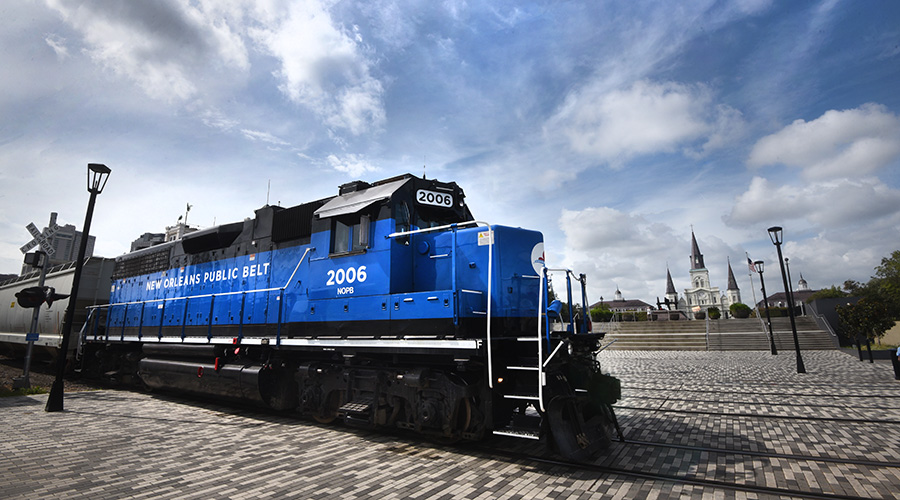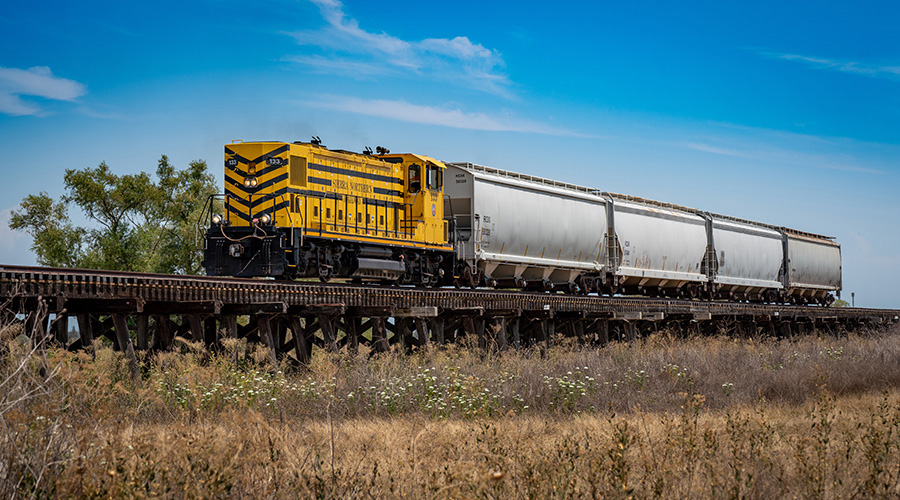Port of New Orleans, New Orleans Public Belt Railroad in growth mode
2/14/2022
By Grace Connatser, Associate Editor
The Port of New Orleans (PORT NOLA) and subsidiary New Orleans Public Belt Railroad (NOPB) handled a lot of freight last year. And they’ll handle a lot more, once a series of rail expansion projects and a billion-dollar terminal development are completed.
Freight volumes shipped via rail or ocean carrier rose significantly year over year in 2021 for many commodities, says NOPB General Manager Mike Stolzman, who’s helmed the railroad since 2019. Port NOLA is the largest U.S. exporter of soybeans and handles many other agricultural commodities.
“We have a distinct advantage because not only do we have the Gulf for ocean-going vessels, we [also] have the Mississippi River, a very robust highway system and connection to six Class I railroads,” Stolzman says.
Breakbulk cargo volumes rose 46% in 2021 compared with 2020’s total. And while intermodal volume at the port decreased slightly from 42,774 20-foot equivalent units (TEUs) in 2020 to 42,093 TEUs in 2021, rail intermodal increased 12% over 2020. One reason: Port NOLA accepted diverted import shipments destined for the Midwest due to various supply chain congestion issues experienced at West Coast ports, especially Los Angeles and Long Beach.
For NOPB, car volumes also rose 16% year over year, with plastics, lumber and machinery driving the increase. And although worker shortages plagued ports upstream of the Mississippi River, Port NOLA was in hiring mode last year.
“We actually increased our workforce by about 10%,” Stolzman says.
Meanwhile, planned rail expansion projects will boost capacity. In 2019, NOPB received a $7.29 million Consolidated Rail Infrastructure and Safety Improvements grant that would partially fund four projects, two of which were completed in 2021.
 In 2021, NOPB's car volumes rose 16% year over year, with plastics, lumber and machinery driving the increase. NOPB
In 2021, NOPB's car volumes rose 16% year over year, with plastics, lumber and machinery driving the increase. NOPB Projects still in development include a 300-car yard expansion dedicated to rail-car storage, which goes to bid during this fiscal quarter, as well as a 180-car yard expansion for industrial support. In May 2021, the port completed a new 206-car yard for rail-car storage, which is called a “greenfield” project – a development on a completely vacant piece of land that makes it easier to comply with environmental standards. In August, the port automated all switches in the main yard, which are now 100% solar-powered.
“We're in a banner year for the transload customers in the distribution warehouse,” Stolzman says. “We've been very fortunate to stay fluid, and the port and the railroad are both in the expansion mode.”
Port NOLA and NOPB officials are “cautiously optimistic” about the year ahead, Stolzman says. They've been moving a lot of petroleum and petroleum products — the port, for example, moved 64,000 TEUs of plastic resin from a petrochemical plant in southeastern Louisiana in 2021. With the price of crude oil sharply increasing to nearly $90 a barrel since December, Stolzman believes the railroad and port will move even more petroleum in 2022 due to demand from refineries and manufacturing plants.
And once the $1.5 billion Louisiana International Terminal is open for business, the railroad and port should post even more growth. To be built on 400 acres (out of a total 1,100-acre purchase), the terminal and related infrastructure will improve port access for large ships, Stolzman says.
“[It’s a] state-of-the art multimodal container terminal,” he says. “It will accommodate 50-foot draft ships, which means the big boys. It is downriver of New Orleans six, seven miles … which means it does not have to traverse under the I-10 bridge, which means that you don’t have a clearance issue anymore.”
The new terminal will be served by NOPB, which is negotiating with a Class I for operating rights of the terminal’s industrial branch. That would allow the port to connect shippers with multiple Class Is, Stolzman says.
On Jan. 24, the U.S. Army Corps of Engineers began the multi-year permitting process for the terminal, which will be able to handle an estimated 2 million TEUs annually. The terminal is scheduled to open by 2027, Stolzman says.


